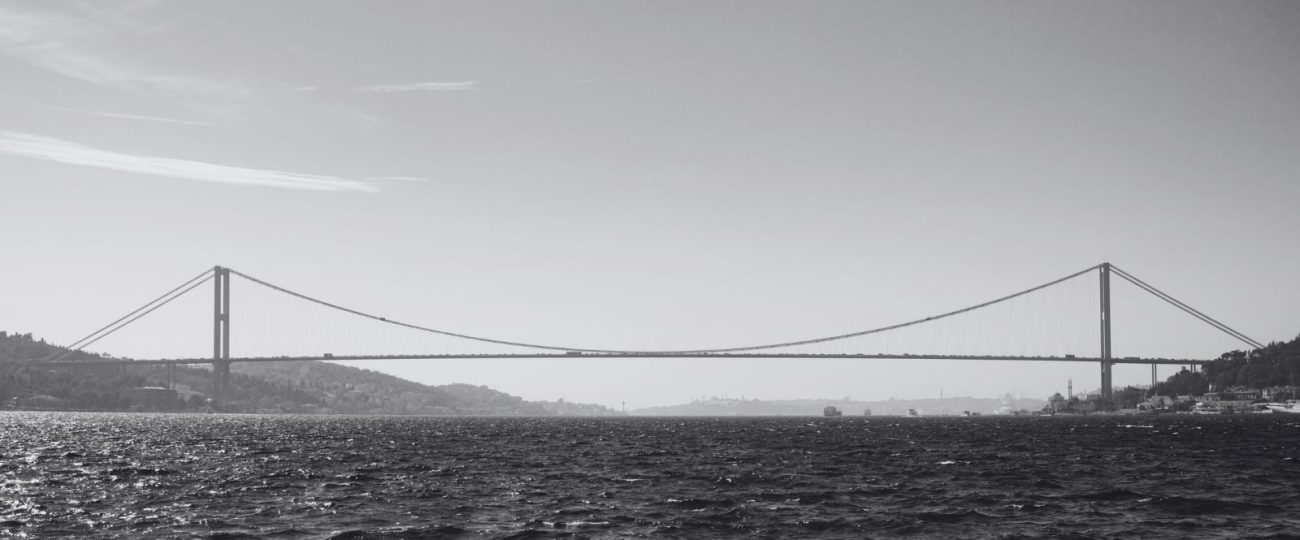What Happened On October 30th?
On October 30, 1973, the Bosphorus Bridge linked Europe and Asia for the first time with a permanent structure. The occasion, coinciding with the 50th anniversary of the Turkish Republic, drew massive crowds. Turkish President Fahri Korutürk, alongside international dignitaries, led the grand ceremony, and once the barriers were lifted, vehicles crossed the bridge for the first time. It was a milestone for Istanbul, bringing together two continents that had only been connected by ferries. Earlier in the day, residents took the rare opportunity to walk across the bridge, marking an extraordinary moment in history.
The bridge revolutionized life in Istanbul. The city had grown rapidly, and the existing ferry system had become overwhelmed by the increased traffic. The new crossing offered a faster, more efficient route between Europe and Asia, reducing travel time and alleviating strain on the ferries. Beyond transportation, it served as a symbol of Turkey’s commitment to modernization and global standing.
Plans for the Bosphorus Bridge date back to the 6th century during the reign of the Byzantine Empire. However, technological limitations prevented such an undertaking from becoming reality until the 20th century. By the 1960s, Istanbul’s rapid population growth and increasing need for efficient transportation across the Bosphorus finally made the project unavoidable. Construction began in February 1970 after years of planning and international cooperation, involving Turkish, British, and German engineers.
Freeman Fox & Partners, the British firm responsible for designing the bridge, incorporated innovative engineering techniques to ensure the structure could withstand Istanbul’s traffic and seismic activity. The area’s proximity to a fault line required extra precautions, and engineers anchored the bridge’s towers deep into the bedrock to safeguard against earthquakes. The use of advanced technology allowed the project to be completed in just over three years, an impressive feat given its complexity.
When completed, the Bosphorus Bridge stretched 1,560 meters, making it one of the longest suspension bridges in the world at the time. Its towering structures rose 165 meters above the Bosphorus, creating a striking feature in the city’s skyline. Initially, pedestrians were allowed to walk across the bridge, but officials soon restricted it to vehicles for safety reasons. Pedestrian access is now only permitted once a year during the Istanbul Marathon, when runners cross from one continent to the other.
Although the bridge primarily served transportation needs, it also became an iconic part of Istanbul’s cultural and political landscape. The bridge played a role in the failed coup attempt in July 2016. Rebel soldiers attempted to block it to cut off communication and transport between the city’s two halves. However, ordinary citizens fought back, reclaiming the bridge from the rebels and turning the tide of events. In the aftermath, the bridge was renamed the 15 July Martyrs Bridge to honor those who defended it during the coup.
With Istanbul’s population continuing to grow, it soon became clear that one bridge would not be enough to accommodate the city’s needs. In 1988, the Fatih Sultan Mehmet Bridge opened as a second crossing, and in 2016, the Yavuz Sultan Selim Bridge was completed. These additional crossings helped alleviate some of the pressure on the original Bosphorus Bridge, but the demand remained high. The original bridge continues to support the daily lives of millions of commuters and remains to be one of the busiest crossings in the city.
Over the years, it has become a focal point for national celebrations, and its towers are often illuminated in vibrant colors for special events. The bridge regularly serves as a backdrop for major gatherings, adding to its importance as a symbol of unity between Europe and Asia. Its presence in Istanbul’s visual and cultural landscape is undeniable.
The evolution of toll collection on the bridge reflects the city’s growth. Originally, drivers had to stop at toll booths, causing significant delays. Over time, Istanbul introduced automated toll systems, followed by RFID technology, which allowed for contactless payments and improved traffic flow. However, despite these advancements, traffic jams during peak hours persisted due to the ever-increasing population, highlighting the ongoing challenges faced by the city’s transportation infrastructure.
Though Istanbul has since added other bridges and tunnels to its infrastructure, the Bosphorus Bridge remains a cornerstone of the city’s transportation network. Each year, millions of vehicles cross it, and despite the newer routes, it continues to serve as the most iconic and vital connection between Europe and Asia. Its construction fundamentally changed how the city operated, and it is a testament to human engineering, ambition, and the enduring link between continents.
The Bosphorus Bridge has been part of the Istanbul Marathon since 1979, where runners cross from Europe to Asia. It is the only marathon in the world that allows participants to run between two continents. On race day, traffic halts, giving runners the unique experience of crossing the Bosphorus on foot, with views stretching over the water and both sides of the city.
The bridge is lit in different colors during national celebrations like Republic Day. It remains a central feature in the city, symbolizing the connection between Europe and Asia as well as Istanbul’s continued modernization.





